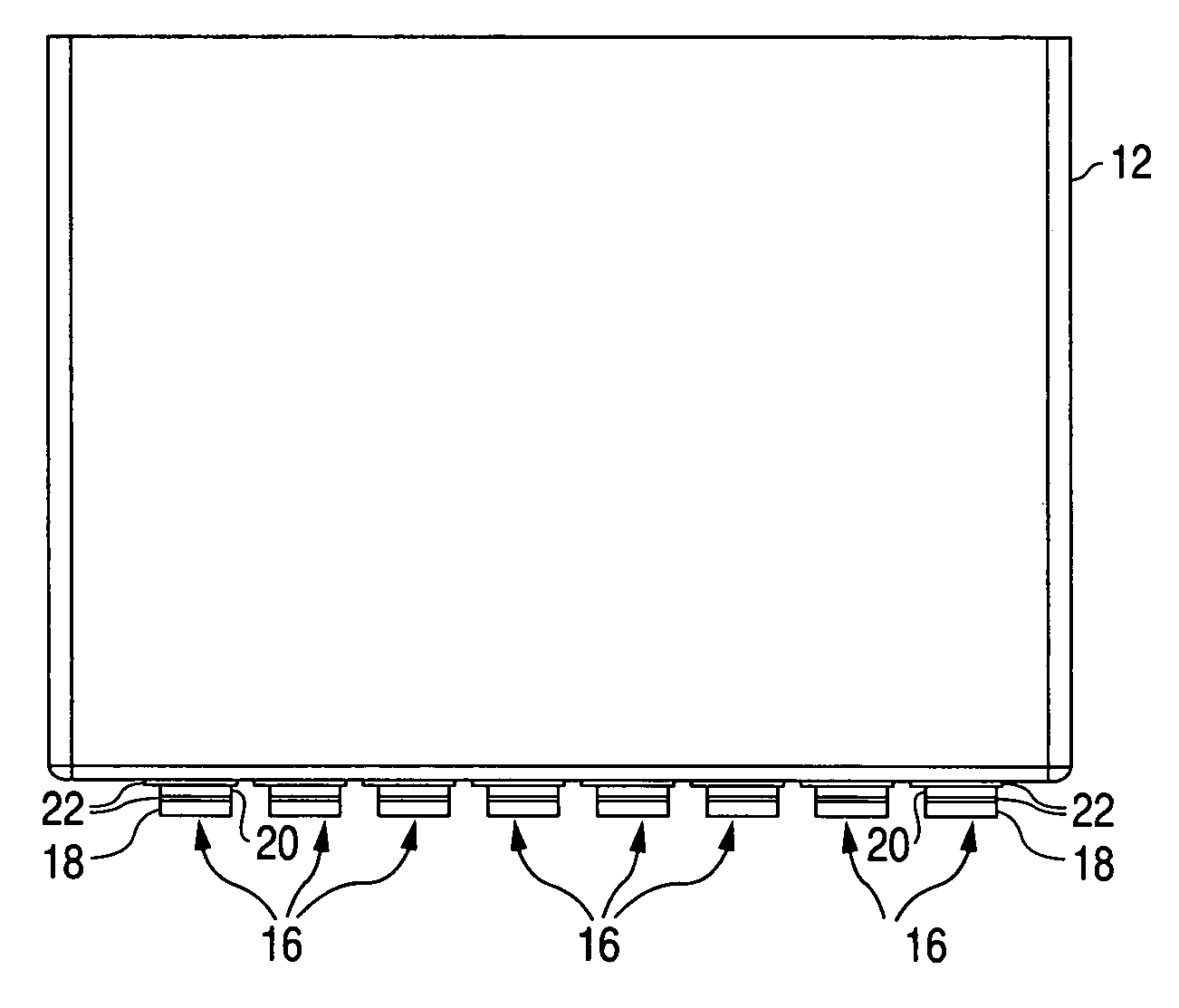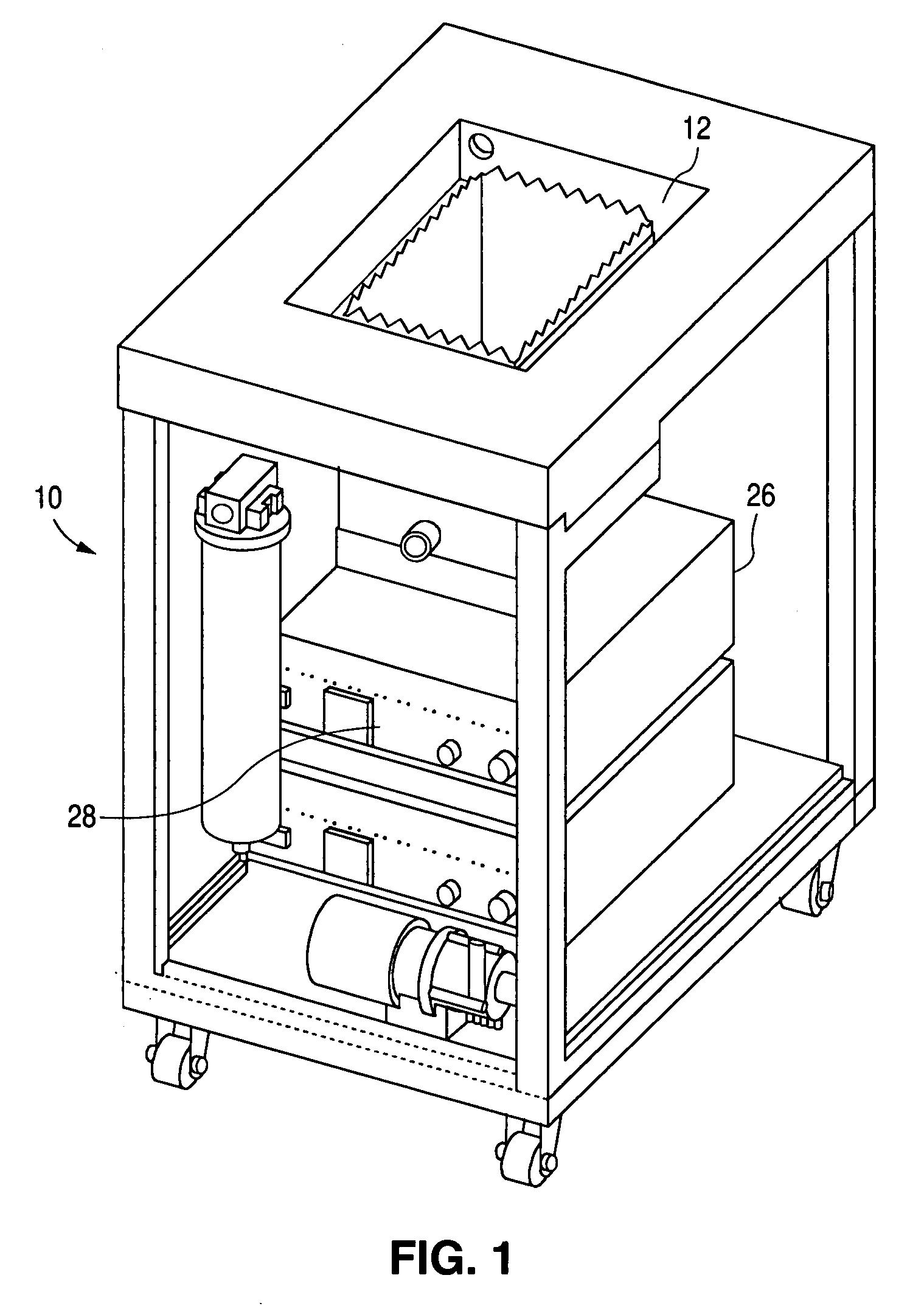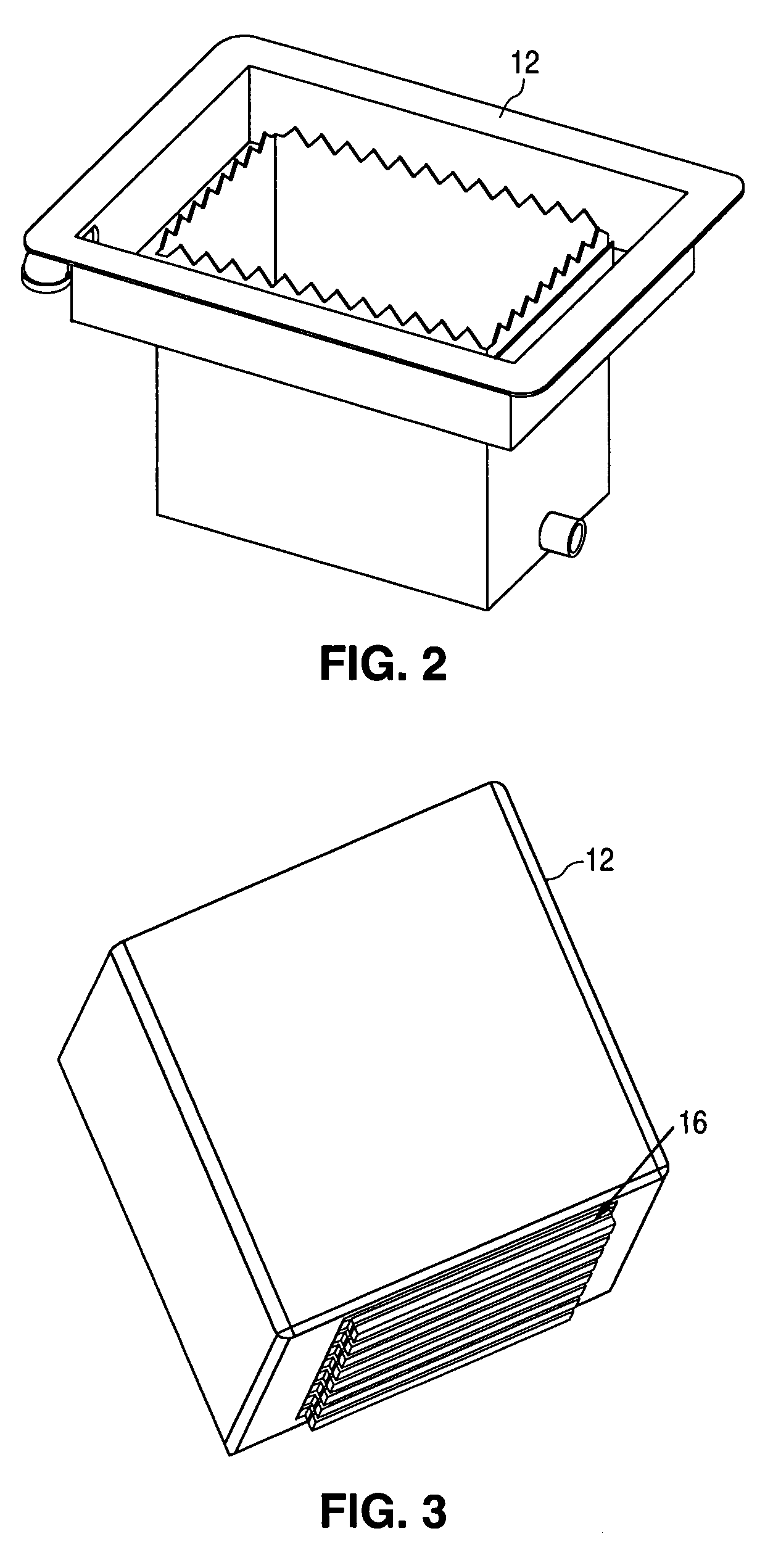Megasonic processing apparatus with frequency sweeping of thickness mode transducers
a technology of thickness mode and processing apparatus, which is applied in the direction of mechanical vibration separation, generator/motor, cleaning using liquids, etc., can solve the problems of ineffectiveness and no benefit from sweeping megasonic frequencies
- Summary
- Abstract
- Description
- Claims
- Application Information
AI Technical Summary
Benefits of technology
Problems solved by technology
Method used
Image
Examples
Embodiment Construction
[0027]The drawings depict various preferred embodiments of the present invention for purposes of illustration only. One skilled in the art will readily recognize from the following discussion that alternative embodiments of the structures and methods illustrated herein may be employed without departing from the principles of the invention described herein.
[0028]One aspect of the present invention is a megasonic processing apparatus and method having a megasonic generator with a programmable sweep frequency range and a programmable sweep rate. The sweep frequency range is the range of frequencies or bandwidth within which the megasonic generator outputs a driving signal to drive one or more megasonic thickness-mode piezoelectric transducers at their resonant frequencies. The sweep rate is the number of times the resonant frequencies are swept per second.
[0029]The megasonic generator preferably includes a controller or other controlling device with means to allow a user to select or p...
PUM
| Property | Measurement | Unit |
|---|---|---|
| frequencies | aaaaa | aaaaa |
| frequencies | aaaaa | aaaaa |
| frequencies | aaaaa | aaaaa |
Abstract
Description
Claims
Application Information
 Login to View More
Login to View More - R&D
- Intellectual Property
- Life Sciences
- Materials
- Tech Scout
- Unparalleled Data Quality
- Higher Quality Content
- 60% Fewer Hallucinations
Browse by: Latest US Patents, China's latest patents, Technical Efficacy Thesaurus, Application Domain, Technology Topic, Popular Technical Reports.
© 2025 PatSnap. All rights reserved.Legal|Privacy policy|Modern Slavery Act Transparency Statement|Sitemap|About US| Contact US: help@patsnap.com



